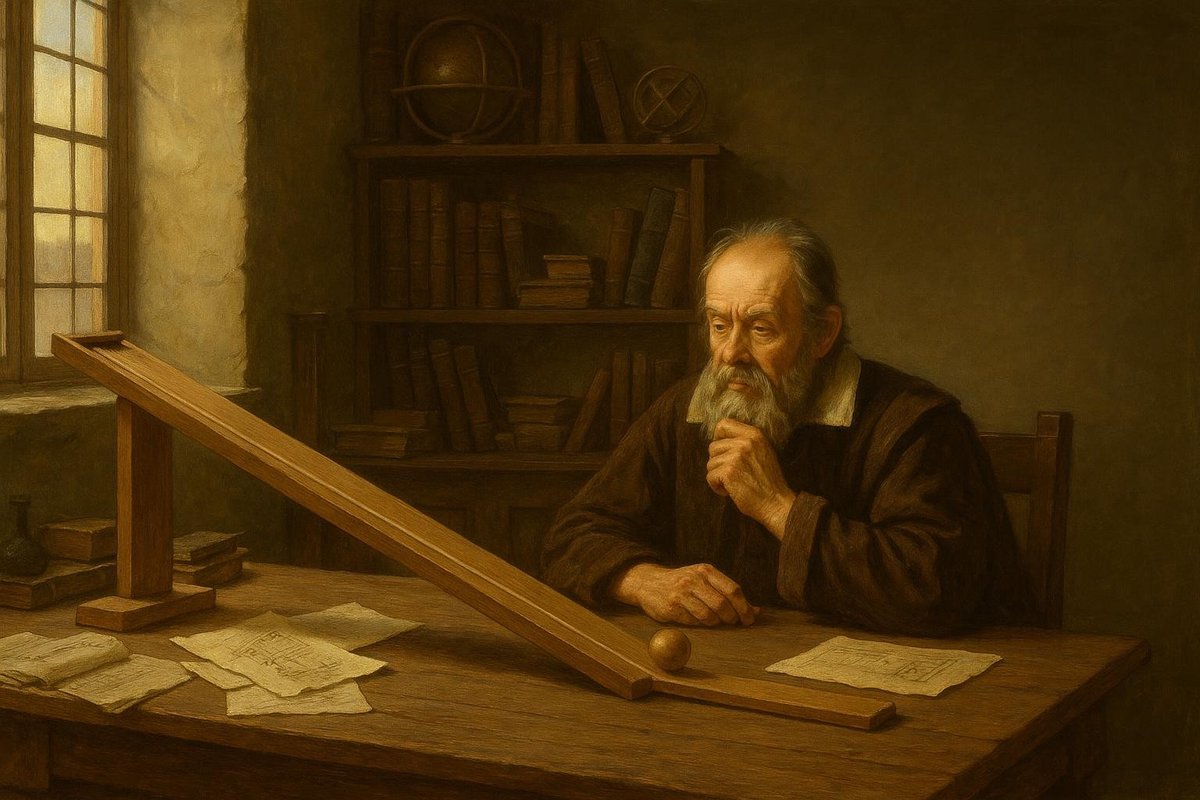
Setting the Stage: Early Influences
In the early 17th century, the air was thick with curiosity, as scientific discovery began to push the boundaries of human knowledge. Galileo Galilei, a mathematician and philosopher, was among those leading the charge. Born in 1564 in Pisa, Italy, Galileo was surrounded by a world that still clung to Aristotelian ideas of motion, which claimed that heavier objects fall faster than lighter ones.
Interestingly, Galileo’s fascination with motion started with simple observations — he was a man who watched the world with a keen eye. During church services, it’s said he timed the swinging of a chandelier with his pulse, noting the pendulum’s regular motion. This sparked a lifelong interest in the mechanics of movement.
- Galileo’s education in Pisa and later at the University of Padua exposed him to a wealth of mathematical knowledge.
- He was inspired by the works of earlier thinkers such as Archimedes, who laid the groundwork for understanding mechanics.
- Galileo’s relentless curiosity and critical thinking set him apart from his contemporaries, positioning him to challenge established norms.
As time went on, Galileo’s bold willingness to question everything he had been taught became the hallmark of his intellectual style.
Constructing Mental Models: The Inclined Plane
Galileo’s inclined plane experiment was a masterclass in precision and simplicity, designed to test the nature of acceleration. Before his work, the concept of acceleration was poorly understood, and many believed that objects moved at constant speeds. Galileo ingeniously used an inclined plane to slow down the acceleration of balls, allowing for precise measurements that were otherwise impossible with free-falling objects.
Of course, the inclined plane was more than just a tool; it was a mental model illustrating an elegant truth about gravity. By rolling balls down a gentle slope, Galileo demonstrated that the distance covered was proportional to the square of the time taken, uncovering the concept of uniform acceleration.
- The experiment was conducted in his home in Padua, with a wooden ramp and simple timing devices.
- Galileo meticulously recorded the time it took for balls to travel different distances down the plane.
- This methodical approach revealed that the acceleration was consistent, regardless of the ball’s weight.
This was a revolutionary insight, as it contradicted the prevailing Aristotelian view and laid the foundation for Newton’s laws of motion.
Overcoming Challenges: Resilience in the Face of Opposition
Galileo’s experiments were not just scientific endeavors; they were acts of defiance against a deeply entrenched intellectual tradition. Many people of his time held fast to Aristotelian physics, and challenging this was nothing short of revolutionary. Galileo faced significant opposition from academic and religious institutions, who were skeptical of his findings.
But Galileo was resilient. He meticulously documented his experiments, ensuring their repeatability and validity. This scientific rigor was crucial in persuading others of his discoveries’ legitimacy, despite the hostile environment.
- He published his findings in works such as “Discourses and Mathematical Demonstrations Relating to Two New Sciences,” which detailed his observations and conclusions.
- His dedication to empirical evidence over theoretical speculation was a bold stance that paved the way for modern scientific methodology.
- Despite facing the Inquisition, Galileo’s ideas endured, influencing generations of scientists.
His resilience in the face of adversity exemplifies the power of persistent inquiry and the scientific method.
Enduring Legacy: A New Era of Science
The impact of Galileo’s inclined plane experiment extends far beyond its immediate findings. It marked a shift towards an empirical, experimental approach to science that valued precision and repeatability. Galileo’s work inspired future scientists, including Isaac Newton, who would build upon his principles to develop the laws of motion and universal gravitation.
Interestingly, Galileo’s methods are still taught in physics classrooms today, underscoring their timelessness and relevance. His insistence on questioning established truths and relying on observable evidence set a standard for all scientific inquiry that followed.
- Galileo’s work laid the groundwork for the Scientific Revolution, which transformed the way we understand the natural world.
- His experiments encouraged others to pursue questions with empirical methods, fostering an environment of innovation and discovery.
- The inclined plane remains a symbol of the power of observation and deduction.
In essence, Galileo didn’t just change how we see motion — he changed the way we seek truth.
Fuel Someone Else’s Curiosity
Galileo’s story is one of curiosity, innovation, and resilience. If his journey into the nature of motion has sparked your interest, don’t let the conversation end here. Share the story of the inclined plane with friends, family, or fellow science enthusiasts. Discuss how one person’s curiosity can lead to monumental shifts in understanding. After all, every great discovery starts with a simple question. Let’s keep asking and exploring together.

Leave a Reply